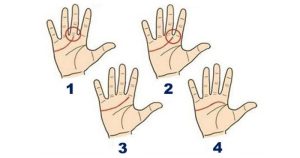Among professional athletes who have tested positive for coronavirus disease 2019 (COVID-19 infection 0.6% had imaging findings suggestive of inflammatory heart disease that resulted in restriction from participation, according to a screening protocol based on American Heart Association (AHA)/American College of Cardiology (ACC) guidelines, researchers reported in JAMA Cardiology.
In May 2020, a number of major North American professional sports leagues —including Major League Soccer, Major League Baseball, the National Hockey League, the National Football League, and the men’s and women’s National Basketball Association — implemented a conservative return-to-play (RTP) cardiac testing program according to the AHA/ACC recommendations for all athletes who test positive for severe acute respiratory syndrome coronavirus 2019 (SARS-CoV-2), the virus that causes COVID-19. In this cross-sectional study, investigators sought to assess the prevalence of detectable inflammatory heart disease in professional athletes with prior SARS-CoV-2 infection in accordance with the current RTP screening recommendations.
The analysis included 789 professional athletes who tested positive for SARS-CoV-2 from May 2020 to October 2020 and underwent RTP cardiac screening. The mean age of the cohort was 25±3 (range, 19-41) years, and 777 (98.5%) were men. Among the athletes, 460 (58.3%) had previous symptomatic COVID-19 illness, and 329 (41.7%) were asymptomatic or paucisymptomatic but had tested positive for SARS-CoV-2.
Continue Reading
SARS-CoV-2 positivity was diagnosed by polymerase chain reaction (PCR) assay in 587 (74.4%) athletes and antibody testing in 202 (25.6%) athletes. For athletes who tested positive for SARS-CoV-2 with PCR assay, cardiac screening was performed a mean of 19±17 (range, 3-156) days after the positive SARS-CoV-2 test.
A total of 30 athletes had initial abnormal screening results and were sent for additional testing. Cardiac magnetic resonance imaging (CMR) was performed in 27 athletes in this group. Downstream testing confirmed diagnosis of inflammatory heart disease in 5 (18.5%) of the 27 athletes (0.6% of the total cohort); 3 athletes had CMR-confirmed myocarditis (0.4% of the total cohort), and 2 athletes had CMR-confirmed pericarditis (0.3% of the total cohort).
The athletes with confirmed inflammatory heart disease were held out from participation in their sport according to the RTP screening recommendations. The remaining 25 (83.3%) athletes who underwent additional testing ultimately did not have findings that suggested acute cardiac injury and returned to play. No clinical cardiac events have occurred in any of the athletes who had cardiac screening and resumed full professional sporting activity, as of late December 2020.
This study has important limitations, according to the researchers. RTP screening examinations were performed in a clinical setting and were usually analyzed and adjudicated by team physicians and cardiologists across the United States and Canada, which may lead to varying determinations of potential cardiac pathology and need for downstream testing. There was also variability in the time between SARS-CoV-2 testing and cardiac screening, and 98.5% of the athletes were men.
“We observed only rare cases of athletes having potential cardiac involvement,” stated the study authors. “This reporting of systematic RTP cardiac screening, while not generalizable to all athletic populations, can provide clinical guidance for other athletic organizations who are preparing and optimizing RTP protocols.”
Disclosures: Some of the authors reported affiliations with sports leagues, associations, and teams. Please see the original reference for a full list of disclosures.
Reference
Martinez MW, Tucker AM, Bloom OJ, et al. Prevalence of inflammatory heart disease among professional athletes with prior COVID-19 infection who received systematic return-to-play cardiac screening. JAMA Cardiol. Published online March 4, 2021. doi: 10.1001/jamacardio.2021.0565
This article originally appeared on The Cardiology Advisor





